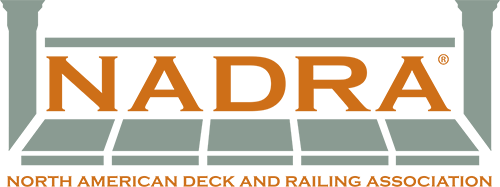By Bobby Parks
Today’s Outdoor Living Contractors
In today’s deck building market, radiuses, borders, inlays, outdoor lighting, and mitered stair tread details have become the trend. I have friends that deliver amazing award-winning creations utilizing some or all these elements and most have figured out not only an efficient way to deliver these options, but also how to price them. I know from price tags I’ve seen on jobs and through conversations as I travel around the country that some could be charging more than they are for their projects and especially upgrade features. These operators are producing impressive work, but at compromised prices. In a best case scenario, this limits their profitability. In a worse case scenario, this weakens their financial health and lessens their chance of riding out the next economic downturn as there’s likely no buildup of reserves!
Reasons for Underpricing
Many deck builders begin businesses with stronger building skills than sales abilities. While most develop the balance with both, some don’t and often provide quotes without proper presentation or follow up which can handicap margin. They can sell jobs as long as the price is “low enough” but for varying reasons, they struggle to sell at needed margins.
Underpricing or selling at minimal margins is often a result of one of the following: Not understanding the real cost of delivery. Not understanding the cost of overhead. Undervaluing ones worth. Underdeveloped people skills and sales ability.
Generally, it occurs with newer contractors that are trying to establish themselves, but lack confidence in their ability to sell or in the value of what they offer. It also occurs with many who worked as subcontractors that have not fully understood retail pricing or struggle to mentally overcome the “cost” aspect when quoting a customer. It even happens with veteran operators who undervalue their worth and lack the development of confidence to mentally overcome price.
Motivation, ambition, and what’s considered as satisfactory profitability varies with contractors. At the end of the day it’s what you are satisfied with that matters. I’ve met with contractors that weren’t charging enough for basic jobs and I’ve met with some who charge appropriately for most jobs but don’t charge enough for added features. Let’s touch on some of these.
Radiuses Are Premium Features with Premium Price Tags
Radius decks provide a great look and delivering them can separate you from competition as you’re offering options that many don’t. But as good as they look on website galleries and social media, it’s only a good option if they’re profitable deliveries. The process for layout, framing, jigs, material, heating and bending borders, and taping takes extra time and requires an investment in equipment. From a sales and production standpoint you’ll spend more time on the site compared to simpler designs, so the project should be priced to produce comparable margins as other jobs from a production aspect. Giving a deal on the first couple of jobs to create projects to leverage off of makes sense, but otherwise these works of art are opportunities for added profit.

Mitered Stair Detail Feature Options
Stairs are a necessity for function and can be a “feature” as well. When I built in Georgia most deck projects averaged being at 10’-12’ elevations with 15 or more treads a common occurrence. Often a landing to redirect the stairs was needed, so by the time railing and lighting were added in, this was a pricey component costing the customer several thousand dollars before the deck dollars even factored in. This left less in the budget to create the usable space, so I kept it simple with stair systems that included riser boards, stair treads, and continuous pvc side skirt trim but not mitered surrounds. It was a clean and functional finish but not a “feature”. If I were operating today, I’d give the customer a choice for more deck space with “nice stairs”, or less deck space with really nice stairs”.

I discuss stairs here as I do for three reasons. One I know from conversations that some have been charging for custom treads similar to what I was charging for my standard ones five years ago. Secondly if the stringers are not stiffened and the treads not installed correctly, potential issues may show up as stairs are tested every time someone walks them. The push off when weight is applied traveling upstairs and the downward impact pressures on tread nosings walking down is different than typical deck surface travel and can rock the miters over time. You must think about what these will look like 5-10 years down the road and not just for your one, three, or five 5-year warranty. And third, if flat blocking is used and not taped there’s potential for rot issues as well as framing swell which can open up the joints. So, if you’re installing them, take appropriate measures to ensure they’ll hold up and price accordingly.
Lighting Features
Because code requires stairs to be lit in some fashion, I always had a standard lighting package priced in and offered the customer an option to add more for the deck. I know some contractors that throw in a lighting package as a “special offer” effort to help sell the job. If you have priced the project where you believe you can absorb this without affecting your real desired margins or you’re willing to take a hit on some jobs, then I see the rationale. I realize some basic packages can be done at a low cost, but in my opinion, contractors should see “lighting” as an opportunity to add to profits, and not provide for free. Why give something away that most will pay for and that could potentially create callbacks?
Price it so the Customer Pays Now and You Don’t Pay Later
I’ve learned from over 30 years as a builder that products don’t always perform as advertised. Wood rots, fasteners corrode, and manufactured products can fail. Years fly by and not everything stands the test of time. Incorporating high building standards with pricing that guard against problems is a good approach. Taping pressure treated lumber in certain applications is a good example. But charge for your work and educate the customer why it’s a good idea to do it. If you’re going to experience rot, it’s likely to show up on cut stair stringers, planed down joists, and flat blocking areas used for inlays and borders, so taping is a wise investment. Even if your structural warranty has expired, your reputation can still be harmed with wood or product failures. And if you didn’t follow exact installation guidelines and set the customer up to be “in compliance” and a failure occurs as a result, regardless of your warranty; you may very well be liable.
In Summary
So, understand my efforts here are not to offend anyone because of how they operate. I know some markets are more challenging than others and there are always low-ball contractors that factor in. The points I’m trying to make are: Value your gifted abilities and worth and charge accordingly. Have confidence in what you do and require customers to pay for the skill you bring to the table and the art you create when it comes to upgrades or don’t do them. Limit the deals you give and only award that “upgrade discount card” for those rare projects where it will be worth the investment. Leverage off those jobs and off the reputation and brand you build and maintain because you possess the skill for such offerings. Create sales models and track cost of delivery so you’ll be able to accurately charge moving forward. Give your customers options with an upgraded price tag so they see the difference and value, so you come out ahead either way. Realizing markets vary most can charge their worth. It’s a builder’s market in most regions and if you’re a quality operator, you are in the driver’s seat. And although profit margins vary slightly from job to job when job-costing is done what’s important is that it averages out at the end of the year.
Selling jobs at the right price will always be challenging and requires several aspects working together.
The key is to separate yourself from others by creating layers of credibility. Gain confidence in who you are and what you offer along with generating the right kind of leads that provide the opportunities needed to hit your numbers. There are ways to position your company to increase success in sales and increased margins and I’ll share my thoughts on that in upcoming pieces.

Copyright February 12th, 2020 – Bobby Parks


